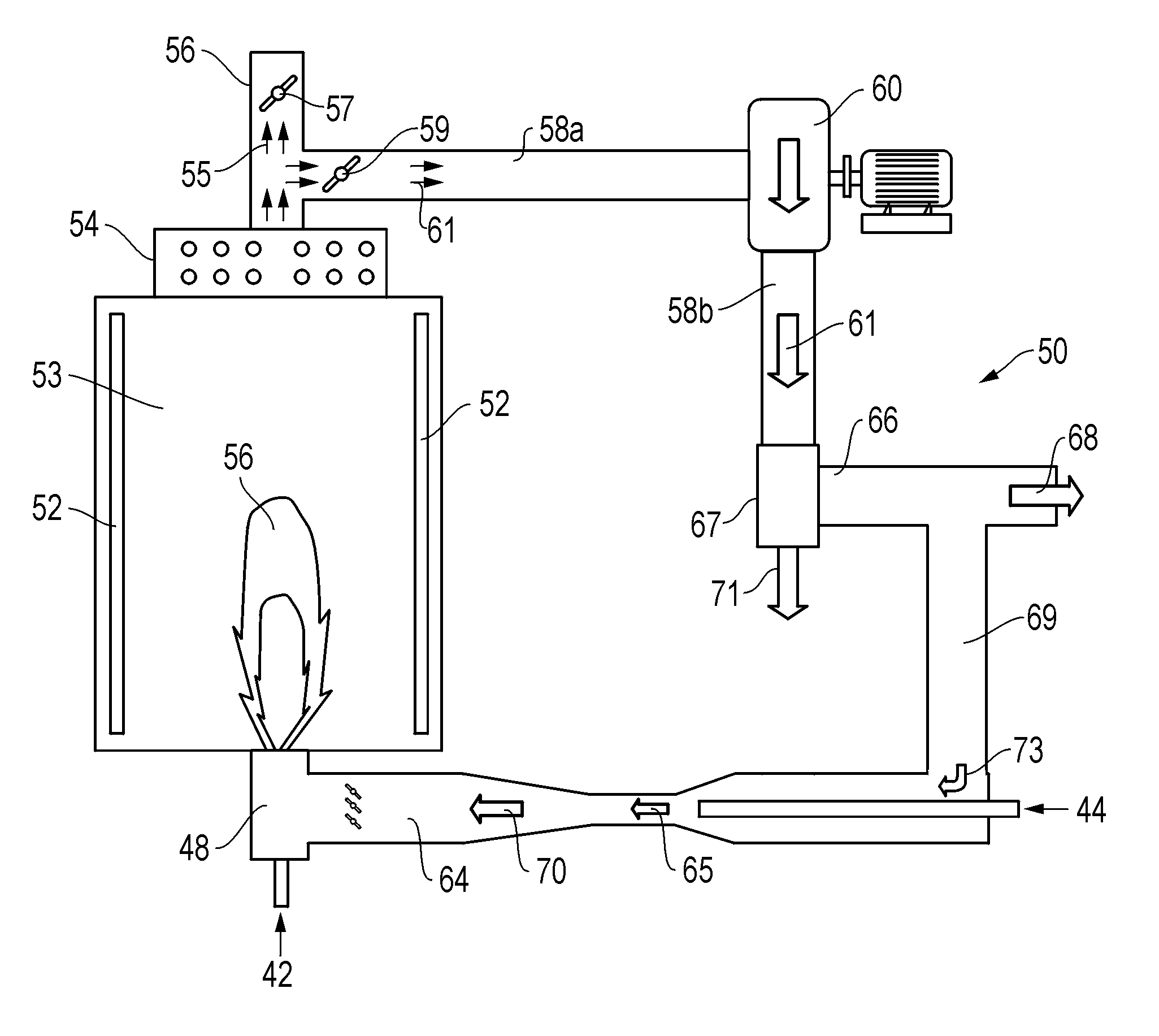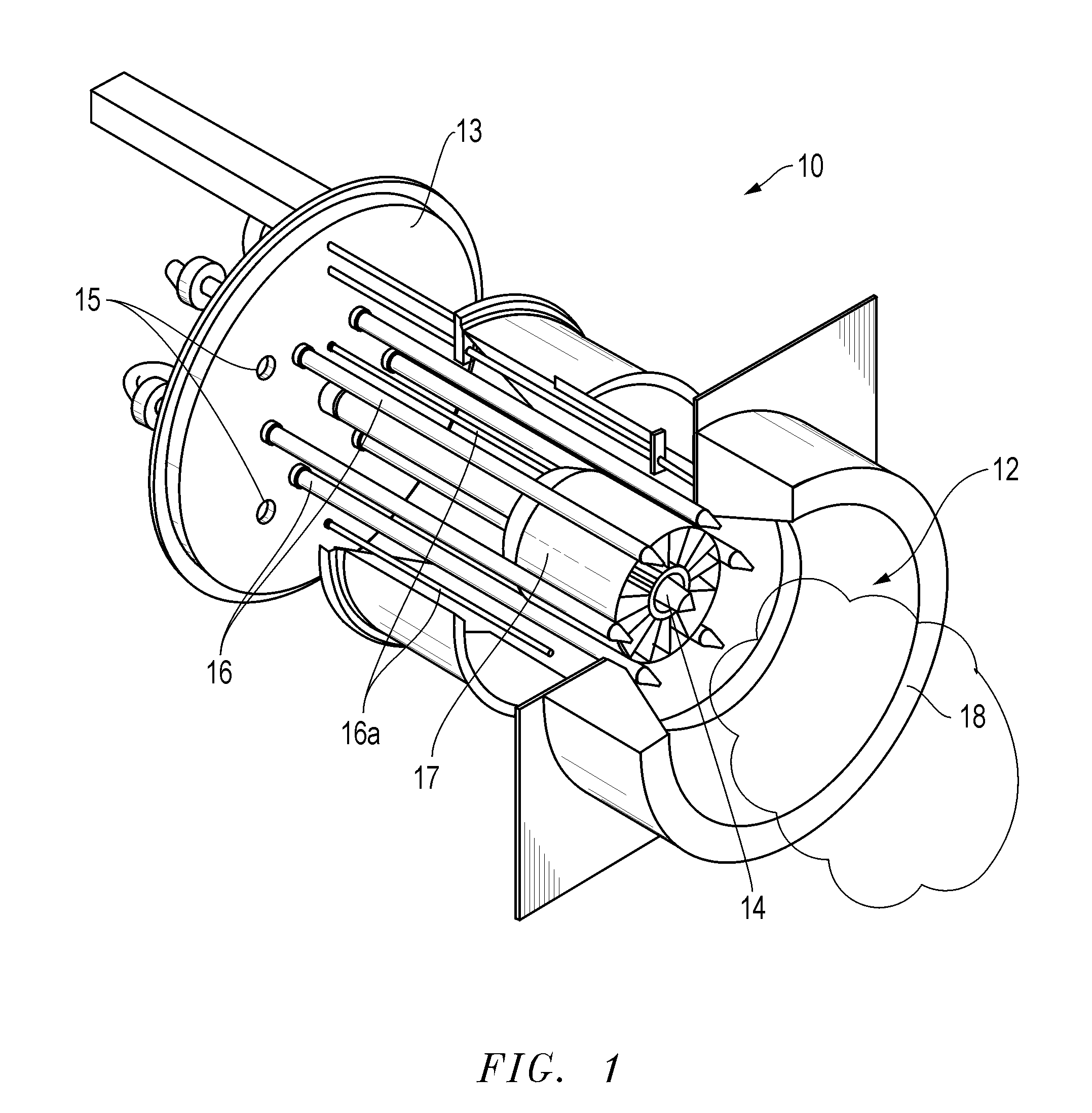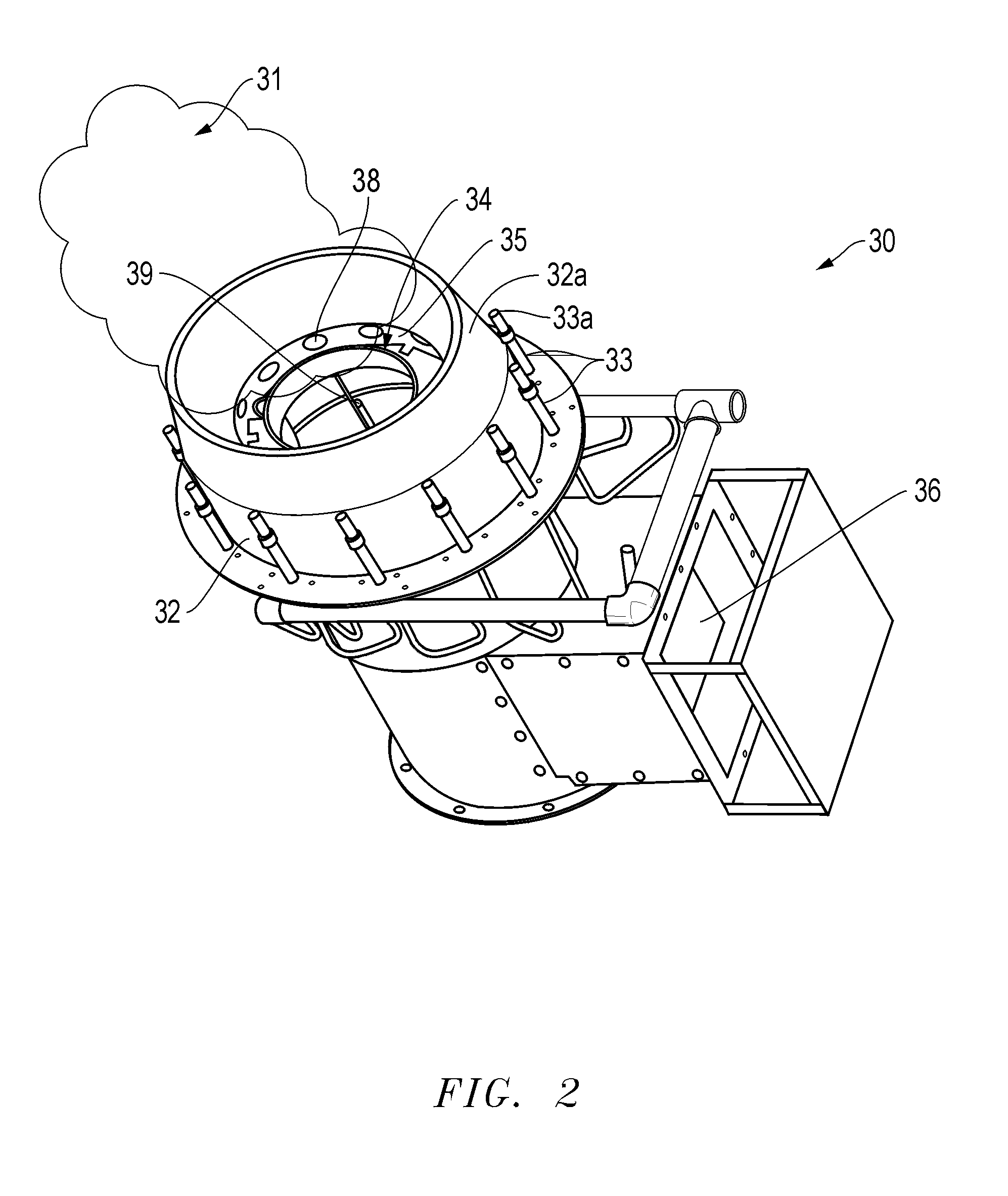Methods, compositions, and burner systems for reducing emissions of carbon dioxide gas into the atmosphere
- Summary
- Abstract
- Description
- Claims
- Application Information
AI Technical Summary
Benefits of technology
Problems solved by technology
Method used
Image
Examples
example 1
Assessing Peak Heat Flux
[0120]The peak heat flux limits the combustion mixture that can be fed to a burner and furnace. A peak adiabatic flame temperature generally occurs at stoichiometric, or at a “fuel equivalence ratio” of Φ=1.
[0121]The phrase “fuel equivalence ratio” (Φ) is defined as (fuel / air)actual-in-mixture / (fuel / air)stoichiometric. A fuel equivalence ratio of Φ=1 is stoichiometric. If Φ1, then a combustion is a “rich fuel” combustion.
[0122]In FIG. 6, the calculated adiabetic flame temperatures for air-fuel combustion at fuel equivalence ratios of from 0.5 to 2.5 and at various CO2:O2 ratios are graphed. As seen from FIG. 5, the calculated adiabatic flame temperature of a combustion mixture generally increases when the combustion mixture comprises more oxygen. The calculated adiabatic flame temperature of a combustion mixture generally decreases when the combustion mixture comprised less oxygen.
[0123]As seen from FIG. 6, substantially the same calculated adiabatic flame te...
example 2
[0124]Table 1 shows the predicted flue gas composition obtained when fuel gas is burned with oxidant comprising a CO2:O2 mixture at a 75:25 molar ratio (similar to the ratio of N2:O2 in air). The assumed combustion mixture and the predicted composition of resulting flue gas are shown in the following Table:
CH4 + 1.15 * 2(O2 + 75 / 25 CO2) --> CO2 + 6.9CO2 + 2H2O + 0.30O2Fuel CompositionFlue Gas CompositionmoleslbsmoleslbsCH4116CO2144.00H2O236.00O22.373.6O20.39.60CO26.9018.98CO26.9303.60sum10.20108.5810.20393.20
[0125]As seen from the Table, the combustion is predicted to produce primarily carbon dioxide, water, and oxygen. The predicted flue gas comprises about 80 mole % carbon dioxide. This is much higher than the carbon dioxide content of flue gases produced by air-fuel combustion, which typically comprise about 10 mole % carbon dioxide.
example 3
[0126]An assessment was performed to determine whether a recycled carbon dioxide / oxygen stream can be successfully combusted using existing air-fuel heating equipment. Specifically, it was assumed that natural gas was fed to a combustion chamber through a first nozzle having a first nozzle diameter. It was also assumed that a variety of oxidants were fed to the combustion chamber through a second nozzle having a second nozzle diameter. The assumed test oxidants were carbon dioxide streams having an oxygen content of from 24 mole % to 28 mole %. The pressure drop across the fuel and oxidant nozzles was predicted. The assumed parameters of the combustion and the predicted pressure drops are shown in the following Table:
Stoichio-FlowNozzlemetricPressurespecificratediameterO2VelocityDropConditionsgravity(scfh1)(inch)(scfh)(ft / sec)(iwc2)Fuel, natural gas0.610000.52,000203.727.01Air at standard conditions19,53042,000300.26CO2 recycle, 24% O2, rest CO21.4268,33342,000270.28CO2 recycle, 25%...
PUM
 Login to View More
Login to View More Abstract
Description
Claims
Application Information
 Login to View More
Login to View More - R&D
- Intellectual Property
- Life Sciences
- Materials
- Tech Scout
- Unparalleled Data Quality
- Higher Quality Content
- 60% Fewer Hallucinations
Browse by: Latest US Patents, China's latest patents, Technical Efficacy Thesaurus, Application Domain, Technology Topic, Popular Technical Reports.
© 2025 PatSnap. All rights reserved.Legal|Privacy policy|Modern Slavery Act Transparency Statement|Sitemap|About US| Contact US: help@patsnap.com



